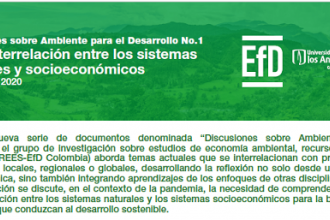The impact of paying for forest conservation on perceived tenure security in Ecuador
We study the impact of Ecuador’s national forest conservation incentives program on reported land conflicts. Data come from a survey of >900 households located within 49 indigenous and Afro-Ecuadorian communities holding communal conservation contracts. We use quasi-experimental methods to test for relationships between program participation and changes in land conflicts. Respondents reported that the program reduced land conflicts when households resided in communities with de facto communal tenure arrangements (vs. de facto semiprivate arrangements).




